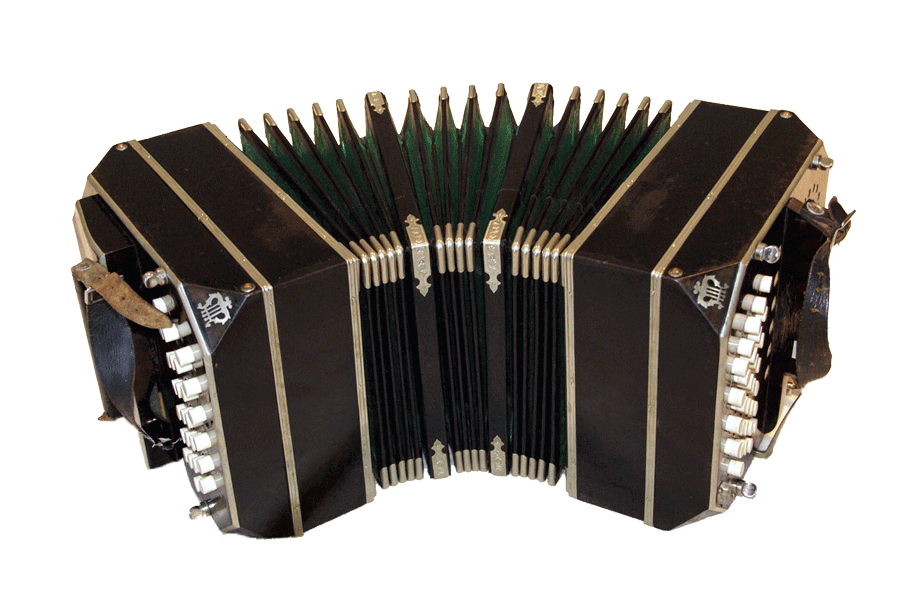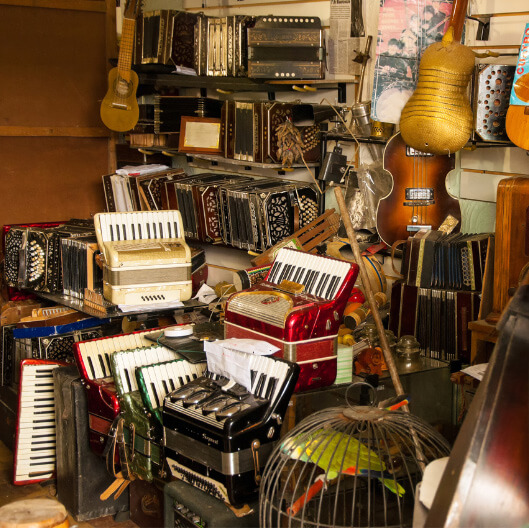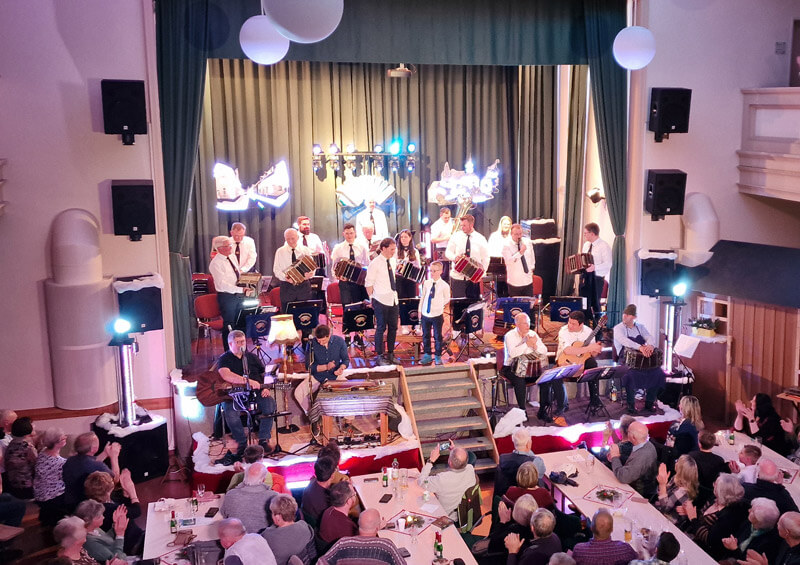Bandoneon Origin — From German Invention to the Soul of Tango
In this guide, I trace the bandoneon origin from Uhlig’s Chemnitzer concertina and the Carlsfeld workshops to its Atlantic crossing and rise as the soulful voice of tango.
You’ll see how German makers refined the instrument, how immigrants carried it to Buenos Aires & Montevideo, how the Golden Age and Astor Piazzolla reshaped its sound, and why today’s revival — from Carlsfeld to global makers — matters.
What Is the Bandoneon?
The bandoneon is a free-reed, bellows-driven button instrument from the concertina family.
It is bisonoric: one button can produce two different notes depending on whether you push or pull the bellows.
- Instrument family: free-reed (metal reeds vibrate as air flows), bellows-driven, button layout; related to the concertina.
- Bisonoric system: direction changes the pitch on the same button; this enables agile phrasing and dynamic swells.
- Use in ensembles: clear lead lines and warm chords; its sound stands out in tango orchestras.
Knowing this basic design helps you hear why the instrument “breathes” so expressively in tango — and sets the stage for the bandoneon origin in Germany.
Bandoneon Timeline — From German Origins to Tango
👉 Swipe to explore the full timeline.
Uhlig invents the Chemnitzer concertina.
Zimmermann opens Carlsfeld harmonica factory.
ELA expands Carlsfeld production.
Alfred Arnold founds AA company.
Migration to Buenos Aires & Montevideo.
Golden Age: bandoneon leads tango orchestras.
Piazzolla creates nuevo tango.
Revival: Bandoneonverein Carlsfeld & global makers.
Origins in Germany

Early Free-Reed Instruments
In the early 19th century, economic hardship in the Ore Mountains (Erzgebirge) led many families to turn from metalwork to musical instrument making.
A milestone came in 1834 when Carl Friedrich Uhlig in Chemnitz built the first “German concertina” (Deutsche Konzertina), based on the free-reed principle.
Airflow set metal reeds into vibration, creating a new category of portable instruments that soon spread through Saxony and Bohemia.
This concertina became the foundation for later developments in Carlsfeld, where builders like Carl Friedrich Zimmermann refined the design and paved the way for what would become known as the bandoneon origin in Germany.
These early free-reed instruments established the tonal and mechanical basis that still defines the bandoneon today.
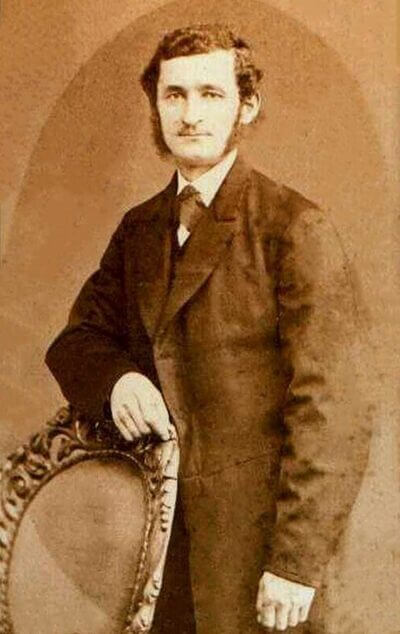
Carl Friedrich Zimmermann in Carlsfeld
Carl Friedrich Zimmermann (1817–1891) grew up in Carlsfeld in the Ore Mountains and began building his first hand-pulled instruments around 1840 in the attic of his family home.
Inspired by Uhlig’s concertina but eager to expand its tonal range, he experimented with larger layouts and added more reeds and chromatic possibilities. His goal was to create instruments that could be used not only in folk settings but also in church and concert contexts.
In 1847 Zimmermann founded the first harmonica factory in Carlsfeld, where he produced what became known as the “Carlsfelder Concertina.” These instruments introduced a richer sound and more complex keyboard system compared to earlier concertinas.
Zimmermann’s innovations were presented internationally, including at the 1851 World Exhibition in London, marking the start of Carlsfeld’s reputation as a center of bandoneon origin Germany.

Heinrich Band in Krefeld
You think Heinrich Band invented the bandoneon — like so many do? Not quite. He was a music dealer in Krefeld who began selling Carlsfeld-built concertinas around 1850. In his advertisements, he used the term “Bandonion”, which later gave the instrument its enduring name.
While Band never built instruments himself, his role in bandoneon history
was crucial: he helped popularize the new free-reed sound across Germany and spread the name that would become inseparable from tango.
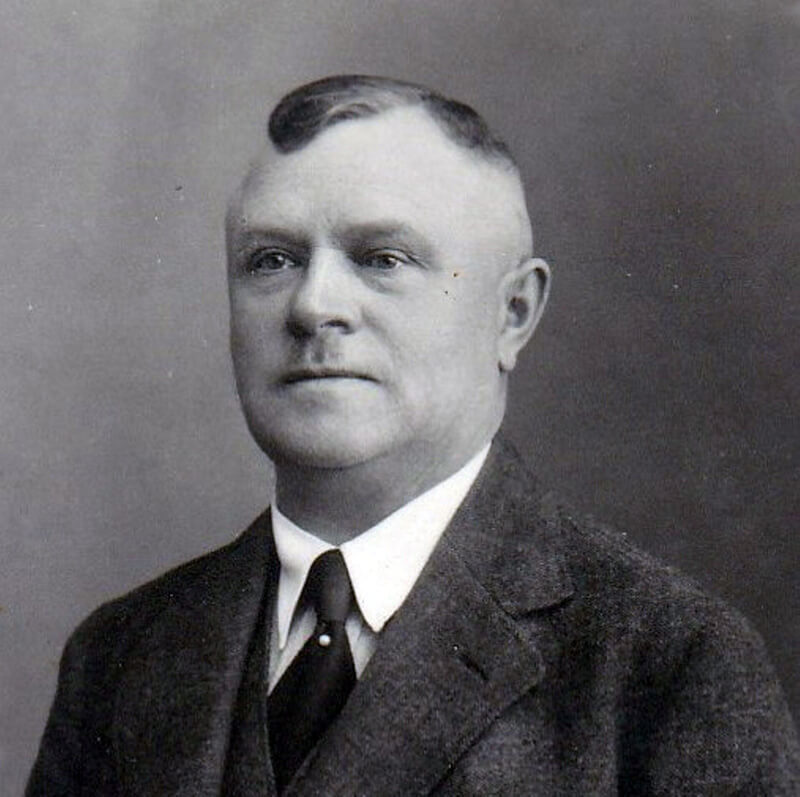
From Zimmermann to the Arnolds
In 1864, Ernst Louis Arnold, a former apprentice of Zimmermann, took over the Carlsfeld factory when Zimmermann emigrated to the United States.
Arnold expanded production and, by 1888, operated under the name ELA (Ernst Louis Arnold), building concertinas, bandonions, and related free-reed instruments. His factory became one of the largest employers in the region and helped secure Carlsfeld’s reputation as a European hub of bandoneon history.
In 1911, Ernst Louis’s youngest son, Alfred Arnold, founded his own company in the original Carlsfeld workshop. His instruments, marked with the trademark AA from 1929 onward, quickly set the gold standard for tone and craftsmanship.
By the 1930s, the Alfred Arnold bandoneon (AA) was exported worldwide, with around 85% going to South America, where it shaped the sound of tango in Buenos Aires and Montevideo. To this day, AA bandoneons are considered unmatched in quality and remain central to the story of the bandoneon origin in Germany.
From Carlsfeld to South America
Immigration to Buenos Aires & Montevideo
In the late 19th century, German and Italian migrants carried their musical traditions across the Atlantic. Among their luggage was the bandoneon, which soon found a new home in the working-class port districts.
This migration explains how the bandoneon in Buenos Aires and Montevideo became a cultural voice of the streets. Later, musicians like Astor Piazzolla would take this tradition and globalize tango.
The Bandoneon Finds Tango
Once in Argentina and Uruguay, the bandoneon blended with milonga and other folk styles. It became the leading voice of the orquesta típica, adding emotion and depth to dance halls. Its sound, both melancholic and lyrical, perfectly matched tango’s themes of longing and passion.
- Integration into early tango ensembles built on milonga traditions.
- Recognized for its expressive, almost vocal qualities.
- Want to experience the sound? Hear short examples in the video section.
The Bandoneon and Tango
Golden Age & Orquesta Típica
By the 1930s and 1940s, the bandoneon had become the heart of the orquesta típica, the standard tango orchestra. Its voice defined countless recordings of the Golden Age of tango.
These ensembles brought the music from neighborhood dance halls to international stages.
- Prominent role in 1930s–40s tango recordings and live performances.
- A traditional orquesta típica combines bandoneons, violins, piano, and double bass.
Piazzolla and Nuevo Tango
In the mid-20th century, Astor Piazzolla transformed the tradition. By blending tango with elements of classical music and jazz, he created nuevo tango.
This style challenged conventions and gave the bandoneon a new international platform.
- Piazzolla modernized harmony, rhythm, and form while keeping the bandoneon at the center.
- His innovations gained worldwide recognition and reshaped tango’s image.
Legacy & Cultural Icon
AA Heritage & Post-War Decline
The Alfred Arnold (AA) bandoneons from Carlsfeld are still regarded as the finest ever built. Their warm tone and precise craftsmanship made them legendary among tango musicians.
After World War II, production in East Germany declined in both quality and output.
By 1964, bandoneon manufacturing in Carlsfeld had ended, leaving collectors and restorers to preserve this heritage.
- AA instruments remain benchmarks of quality and prestige.
- Post-war East German production could not match earlier standards.
- Carlsfeld’s factory closed in 1964, but restoration and collecting keep the legacy alive.
Today
The bandoneon stands as a bridge between continents. It is a European invention, born in Germany, and at the same time a Latin American cultural icon through its role in tango.
Modern players, makers, and teachers continue this tradition, ensuring that the sound remains alive for new generations.
Want to see how the tradition lives on today? Learn more about the Bandoneonverein Carlsfeld, where new generations continue to study and play the instrument.
Conclusion
- Bandoneon origin: From Uhlig’s 1834 Chemnitzer to Carlsfeld refinement by Zimmermann, ELA, and AA; Heinrich Band later popularized the name “bandonion.”
- Bandoneon tango: Carried by German immigrants to Buenos Aires and Montevideo, it became the defining voice of tango.
- Legacy: Carlsfeld production ceased in 1964; AA instruments remain iconic while modern makers and teachers keep the craft alive.
- Cultural symbol: Today the bandoneon bridges Europe and Latin America—German craftsmanship meets tango heritage in a growing revival.
Micro-FAQ
An Alfred Arnold (AA) bandoneon from Carlsfeld, Saxony, is known for exceptional craftsmanship and sound quality.
These instruments are highly valued by collectors and musicians, forming an essential part of the bandoneon’s heritage.
There isn’t a single “inventor.” In 1834, Carl Friedrich Uhlig built the Chemnitzer concertina in Saxony; later Heinrich Band re-imagined the instrument and popularized the name “bandonion.” The design was then refined in Carlsfeld by Zimmermann → ELA → AA (Alfred Arnold), which shaped the modern bandoneon.
Its bisonoric buttons and flexible bellows give a melancholic, voice-like tone that matches the emotion of tango.
Over time, it became the lead voice of the orquesta típica in Buenos Aires dance halls.
The latest Blogs
Tango Instruments: Typical Instrumentation and Roles
November 4, 2025
Bandoneon Origin — From German Invention to the Soul of Tango
September 24, 2025
